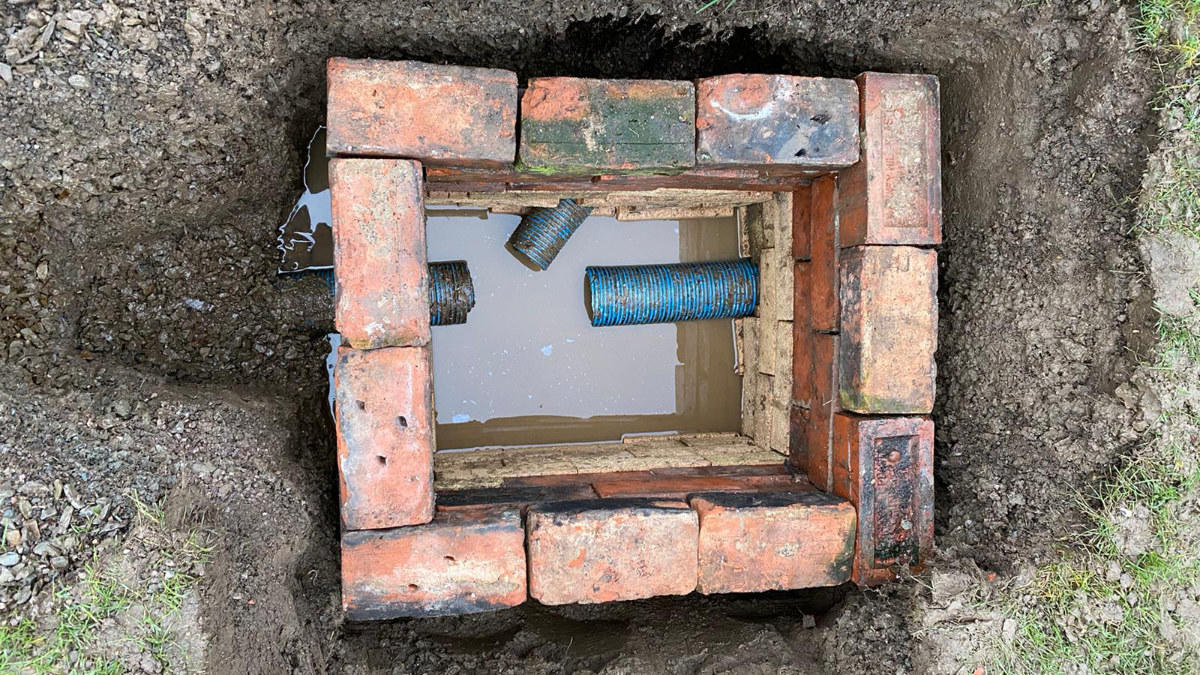- Homepage
- News and Features
- Why you should keep better records to help the next generation
Why you should keep better records to help the next generation

I am sure we are all aware how important drainage is at our golf courses.
If we were not, it has become very apparent after dealing with unprecedented rainfall in the last year. One thing that struck me at Didsbury is the importance of drainage mapping – there was little to none previously.
Thankfully, our course manager, Robert Davies, has been working at the site for nearly 30 years, so we could rely upon his knowledge of the alterations to the drainage system under multiple managers before him. However, this will not always be the case, and because of that, at Disdsbury we drew up plans, keeping track of drains and chambers when they were rediscovered, in the hope of making future jobs that much easier.
It is funny though, that at a time when communication is the topic of the day, we rarely think or talk of communication across various managerships or generations.
The example at Didsbury may be extreme, but over a period of 40 years and three separate course managers, the drainage works were extensive, but the records were minimal.
This is by no means mis‑management. In fact, I think we could all be guilty of thinking in the short‑term and I know I’ve fallen foul of having thoughts like, ‘why should I do that, when I won’t be here to worry about it?’ This sort of thinking goes beyond greenkeeping, I am sure.

However, if we gave more consideration to the lengths those who come after us will have to go to, to uncover our work, before they even get to repair it, I am certain we’d make more of an effort to keep up‑to‑date records.
Our journey at Didsbury started with the first fairway – we were left in a position where every time we had substantial rainfall, we had to close the course because the fairway was impassable. There is one main line » running through the par‑3 fairway and joining up to the 18th hole, before running off into a network of ditches.
On this main line there are multiple chamber points dug, so in cases like last winter the drains could be rodded and cleared. Our issue lay in finding these chambers.
We lost countless hours poking around for something that could be anywhere within a 200‑yard radius.
In addition to this, there are two separate systems running through the hole. The first is a 40 or 50‑year old clay pipe system that has fallen foul of time but is still largely effective. The second is a newer – but still 20‑year‑old – perforated plastic pipe system.
The manager in charge of the newer system had bypassed the old, making it redundant in some areas by passing through the clay pipe and breaking the run. This added to the difficulty because we had to figure out which route the water was leaving through and clear that.
The story does have a happy ending as we were able to find them and subsequently clear the drain lines. Since then the course has been open consistently, although the drop in rainfall has helped somewhat.
Now, I guess you may be thinking that if the chambers were made visible, there would have been no need for the searching or any drainage mapping. You may be right, but multiple drainage covers spanning up and down every hole would look quite unsightly and hopefully, there will not be too many more winters like the one we just had.
At a previous employment I worked at a club that had extensive drainage plans, heralding from the course’s construction. These plans were made up of a hole‑by‑hole map in separate folders containing drainage works and irrigation plans. This meant that before each job plans could be made to optimise the time spent on each task. I took for granted the ease with which drainage works could be completed and never even considered how the lack of this documentation would become a problem, until I faced it this winter.
Until sitting down to write this article I had not considered that this could be a communication problem. But as I got to thinking, it became clear it could not be anything else.
What this experience has made evident to me is the necessity of forward planning, even thinking beyond the span of our own careers or even lifetimes. Our industry is making huge steps towards the future with the use of electricity over fossil fuels and its work in ecology.
These are both clear indications that our generation is looking beyond itself, with an eye towards the future.
As I move up the career ladder, I will attempt to work for those who follow as much as for myself and the ease of that moment.
Continue the conversation: Michael Gibbons is on Twitter at @m20greenkeeper
Michael was writing for Greenkeeper International and has won himself a £100 Continue to Learn voucher. He will also be entered into a draw to win £750 and an all-expenses-paid trip to Florida, when restrictions allow. If you'd like to get involved, email GI editor Karl Hansell on [email protected]
Author

Michael Gibbons

Michael was writing for Greenkeeper International and has won himself a £100 Continue to Learn voucher. He will also be entered into a draw to win £750 and an all-expenses-paid trip to Florida, when restrictions allow. If you'd like to get involved, email GI editor Karl Hansell on [email protected]
